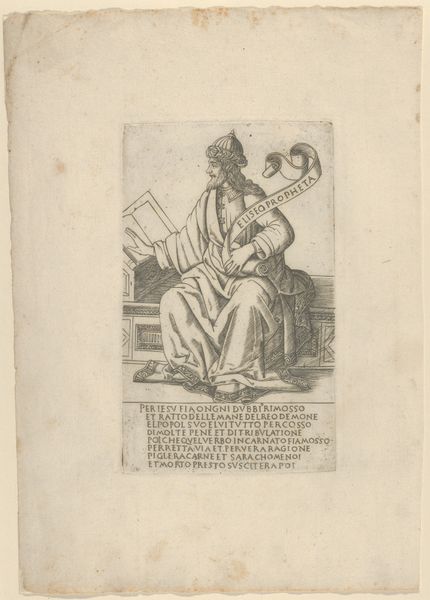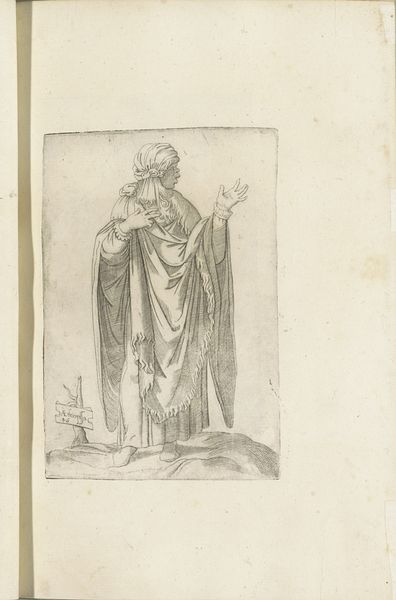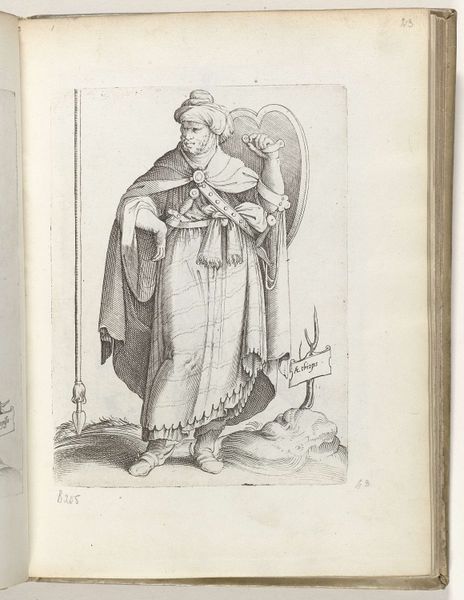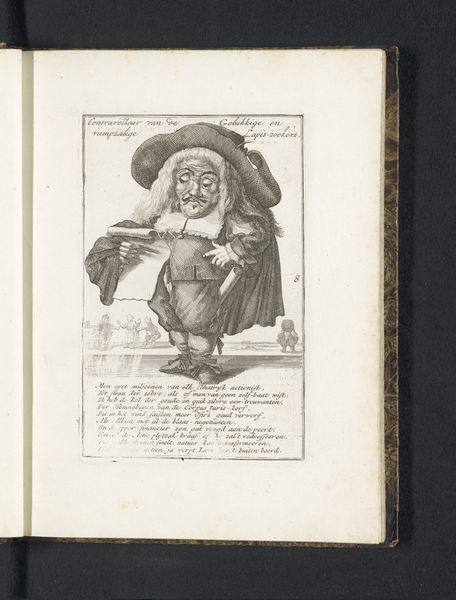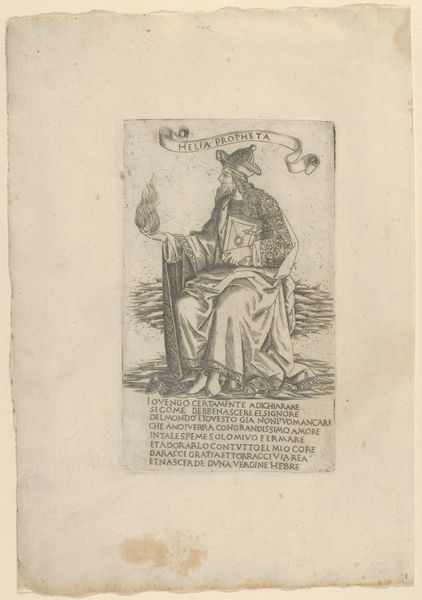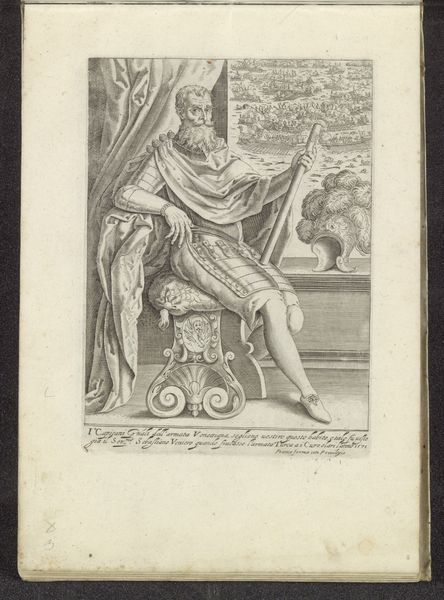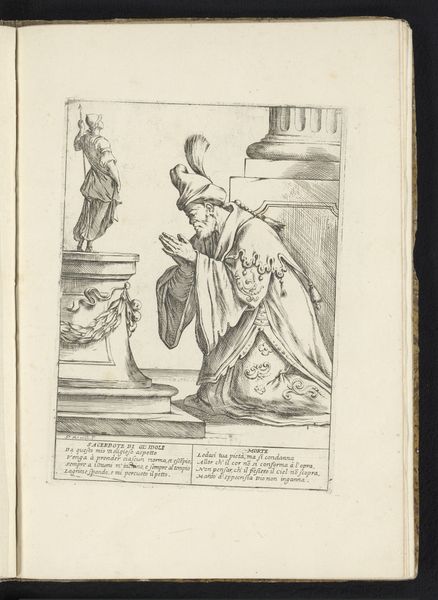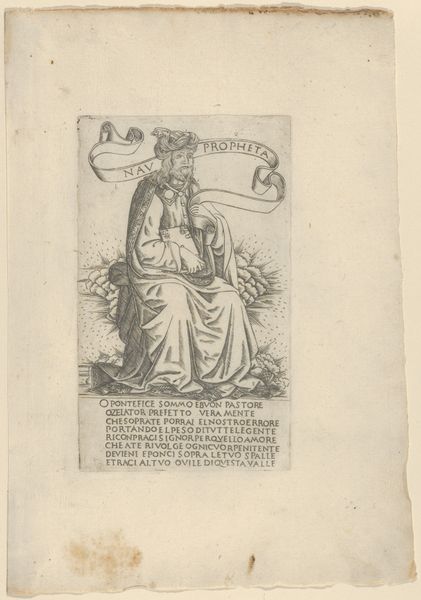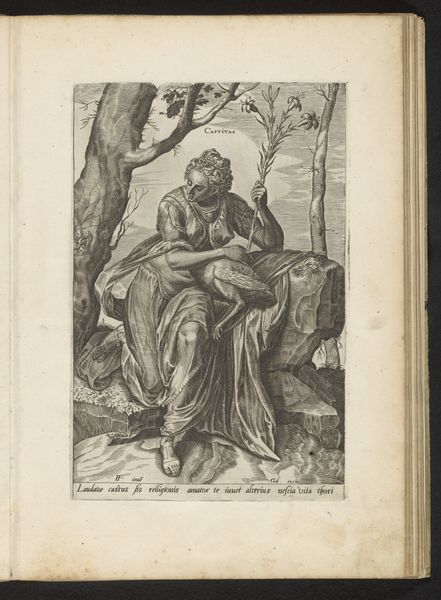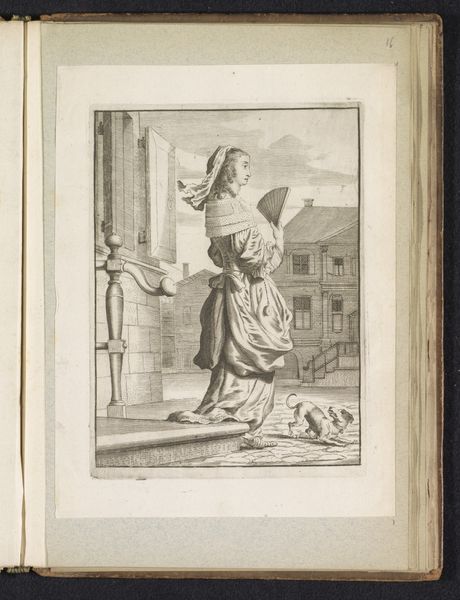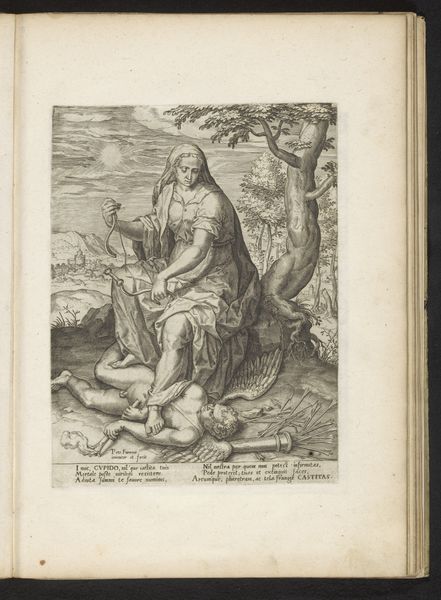
drawing, print, etching, ink
#
portrait
#
drawing
#
baroque
#
pen drawing
# print
#
etching
#
book
#
ink
#
genre-painting
#
academic-art
Dimensions: height 275 mm, width 200 mm, height 394 mm, width 280 mm
Copyright: Rijks Museum: Open Domain
Curator: Giuseppe Maria Mitelli created this etching with ink and pen titled "De allesweter" around 1675. It’s currently part of the Rijksmuseum's collection. What are your first thoughts? Editor: My immediate reaction is that this piece feels wonderfully satirical. The figure’s pose, amidst the towering stacks of books, practically screams "look at my wisdom!" There’s almost a chaotic energy, isn't there? Curator: Indeed! What I find intriguing is the production of this image itself. It’s not simply drawn; it's an etching. The act of engraving that image onto a metal plate implies reproduction, a potentially wider audience consuming this satire. Who might the intended consumer have been, I wonder? Editor: Exactly! Think about the social context of 17th-century Europe. We have the rise of universities, a burgeoning intellectual class… This image likely spoke to anxieties about academic pretension. The artist cleverly employs popular anxieties towards established elitism using irony and caricature. The positioning of texts from both theological and scientific sources suggests an early questioning of their intersections, don’t you think? Curator: It raises questions about the labor of learning. Etching allows for multiple copies to be made, almost democratizing access to art but also to social critique. So, the image circulated, questioning the very act of claiming absolute knowledge—"De allesweter"—while simultaneously participating in knowledge dissemination through prints and drawings. What impact do you feel such a design had on audiences of its era? Editor: It challenged power dynamics, really. The printing medium democratized that critique by mass producing a shared artistic voice which previously wouldn’t have been accessible to some populations. These images acted as vital conduits for shared artistic expression—a counter narrative, so to speak. Curator: Fascinating how the method and matter amplify each other here. In closing, Mitelli used etching to question not just intellect but who produces and who accesses knowledge. It’s a sophisticated use of a reproductive medium for critical messaging, I believe. Editor: It really illuminates that intersection where social critique meets artistic production. What seems like a simple portrait quickly transforms into a multifaceted comment on its era’s intellectual and social landscape.
Comments
No comments
Be the first to comment and join the conversation on the ultimate creative platform.
